Recent Commercial Posts
Leaking Roof? Beware of Mold
4/12/2022 (Permalink)
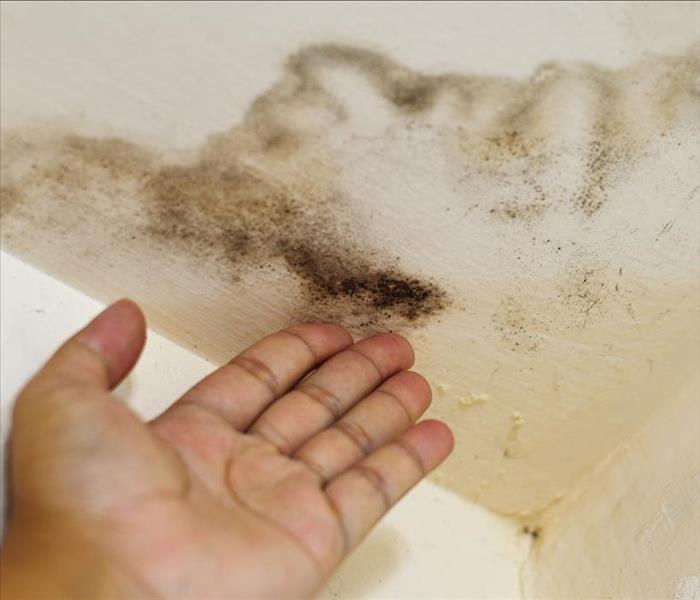 Mold damage on a ceiling.
Mold damage on a ceiling.
As a business owner in Flourtown, PA, your daily to-do list may seem endless. Ensuring maintenance of the property may be easy to overlook, but even a minor roof leak may quickly lead to reprioritizing your list. While a mold remediation and restoration company is trained to eliminate black mold and restore the property, avoiding it altogether is a better alternative.
Types of Growth
Unfortunately, small leaks may go undetected. Since this pesky fungus only needs around 24 to 48 hours to start forming, it may have already spread into a big problem. For commercial properties, there are two main types of black mold growth that a leaking roof can cause:
Systemic Growth: If moisture has built up for an extended period of time, the growth may have spread to the entire attic under the roof. This requires more extensive remediation.
Limited Growth: If there is enough ventilation or the problem has been discovered soon enough, the moisture accumulation may be minimized to the affected area. With it being more contained, the cleanup process is typically much easier to address.
Prevention Tips
While a ceiling leak is a sure sign of a problem, that often takes time to happen. In many cases, the problem isn’t discovered until the damage has already happened. Along with having the roof inspected for potential issues or replacement if is a few decades old, general maintenance helps prevent problems and makes the roof last longer.
Remove any debris that has settled on the roof to avoid damage.
Regularly have gutters and downspouts cleaned to prevent water from pooling.
If the property is near a tree, ensure overhanging branches are trimmed back.
Being faced with black mold means time and money spent on cleanup. While the right conditions may make it hard to avoid, being proactive and addressing any roof issues helps minimize the chances of a problem.
During Regular Building Maintenance, Remember To Check Your Ceiling
3/23/2022 (Permalink)
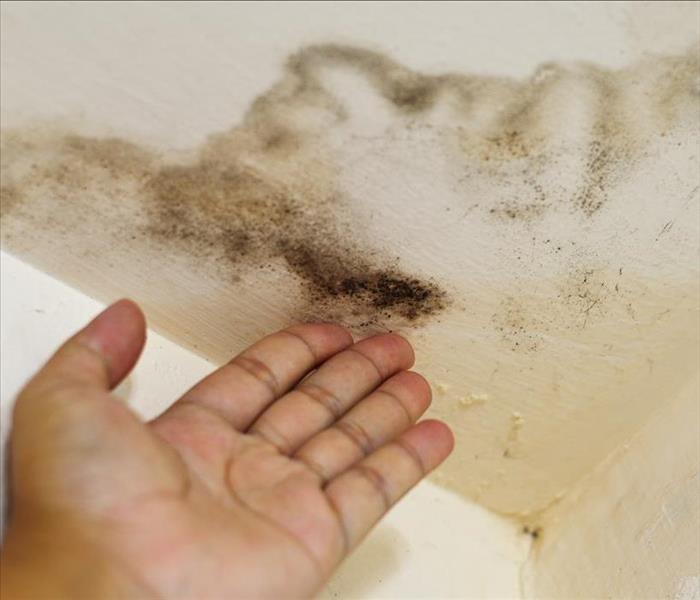 Mold growth on a ceiling due to humidity.
Mold growth on a ceiling due to humidity.
Remember to Check Your Ceiling During Building Maintenance
When it's time to do preventative maintenance at your Cheltenham, PA, facility, don't overlook your ceiling tiles. Most commercial buildings have long-lasting, durable ceilings, which make them easy to forget. However, the porous material in many ceilings makes them vulnerable to dirt, water stains or tile mold.
Tile Inspection
When you evaluate your ceiling, look for tile discoloration or warping due to water damage. Even if your roof is intact, suspended ceilings are susceptible to damage from:
- Leaky pipes
- Humidity or condensation in the ductwork
- Dust and dirt, especially around vents
Grids can also become warped or rusty from exposure to water and humidity.
Maintenance
Your ceiling may have collected more dust and dirt than you expected. Wipe the grid with a damp cloth and some cleaner to see if it makes a clean spot. If so, your ceiling tiles are dirty, too. Clean your ceiling with a soft broom or a gentle commercial cleaner with no solvents.
Now is a good time to check any pipes or ductwork above the ceiling, especially in areas that appear stained or damaged. Cleaning your ductwork as part of a general maintenance routine will reduce the amount of dust above your ceiling.
If you find tile mold, a professional remediation company can help you find hidden water sources and mitigate damage.
Tile Replacement
If you need to replace some of your damaged tiles, check to see if the manufacturer still makes your pattern. It's a good idea to buy what you need plus about 2 percent extra to have on hand in case of future water damage or tile discoloration.
If you notice a big color difference between the old and new tiles, consider replacing all of them for a uniform look.
Maintaining the ceiling in your Cheltenham, PA, facility is a good way to keep problems like tile mold and excess dirt from getting out of hand.
3 Ways Roof Tarping Can Protect Your Business
1/26/2022 (Permalink)
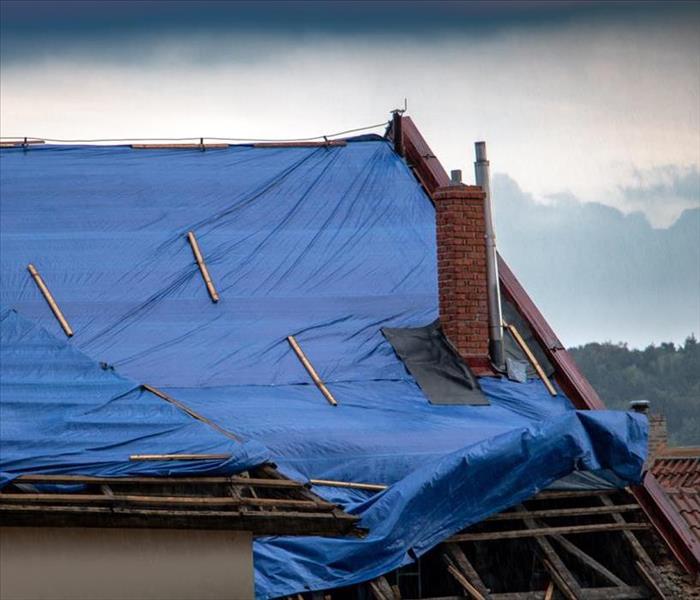 A basic roof tarp is one of the easiest ways to protect your Wyncote, PA, business.
A basic roof tarp is one of the easiest ways to protect your Wyncote, PA, business.
How Tarping Can Help While You Await Roof Repair
After a fire, your property is especially vulnerable. In addition to covering fire cleanup expenses, you must worry about the threat of additional damage and vandalism posed by broken windows, doors and in some cases, roofs. A basic roof tarp is one of the easiest ways to protect your Wyncote, PA, business from further damage that insurance won’t cover. Learn more about how tarping can help while you await roof repair.
A tarp is short for tarpaulin, a big piece of strong, flexible and typically waterproof material with a myriad of potential uses. These can be made of:
- Canvas
- Polyester
- Polyethylene
or any number of durable, water-resistant materials. Their size and durability make them a great choice for protecting your roof. Here’s how.
Prevent Weather Damage
Fires are notorious for burning through the roof, leaving gaping holes that can let outside weather in. Water seeping in through your roof not only damages the contents inside but can soak the insulation, creating the perfect scenario for a costly mold problem down the road.
Block Animals
Water isn’t the only thing that can get in through roof holes. Squirrels, birds and even mice can get into your building through roof holes, setting the stage for a costly infestation that can take months to resolve.
Prevent Collapses
A damaged roof is a weakened one and everything from extra water to strong winds can create more stress that leads to a collapse - and even higher roof repair costs in addition to initial fire cleanup expenses.
How Tarping Works
Tarps work by creating a temporary but strong barrier against the outside while you await roof repair. Installers simply scale your roof and nail the tarp into place. It’s reliable and easily removed when you’re ready to fix your roof.
Protecting your roof during fire cleanup need not be costly. Contact a tarp services specialist to determine what your tarping options are.
Protecting Your Business' Wind-Damaged Roof: 3 Steps To the Repair Process
1/8/2022 (Permalink)
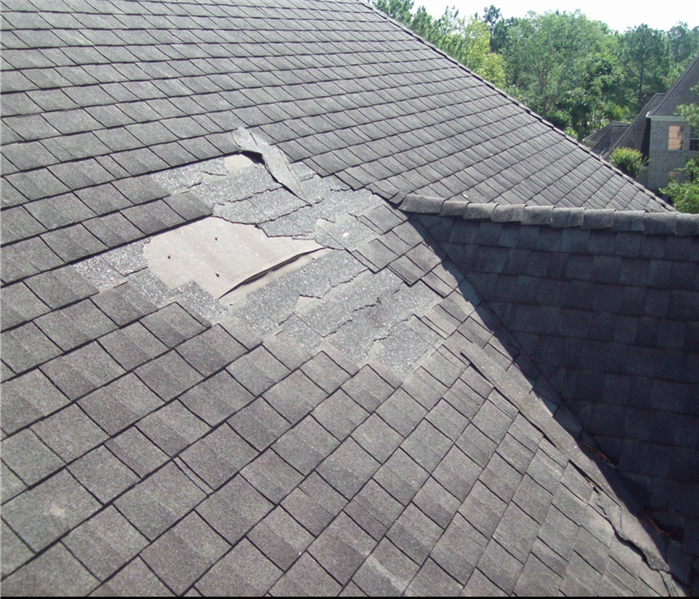 Missing roof shingles in a home in Plymouth Meeting, PA.
Missing roof shingles in a home in Plymouth Meeting, PA.
Protecting Your Business' Wind-Damaged Roof
The exterior of your Plymouth Meeting, PA, commercial building can be vulnerable to weather damage, including high winds. Wind storms can have an especially serious affect on your building’s roof and cause many different issues, including a roof leak and damage from flying debris. If your business’ roof has been affected by high winds, there are a few steps you can take to reduce the risk of additional issues and to facilitate the repair process.
1. Call a Mitigation Service
If your roof is missing shingles and has loose building material that may cause damage to nearby structures, it is a good idea to call a storm damage and mitigation service to have the roof cleared and damaged materials torn out. Mitigation techs can also use tarps and plywood to temporarily patch up any holes that may let in rainwater and cause damage to the interior of your building.
2. Asses Risks From Nearby Structures or Landscaping
If high winds continue to blow once your roof has been damaged, it might be vulnerable to blowing debris from a nearby property. For example, if you own a small building located in an area with many trees, broken branches could exacerbate any existing damage to your roof. Consider having any trees on your property trimmed back and ask nearby business owners to maintain their property’s trees as well.
3. Contact Your Insurance Provider
Filing a claim for your damaged roof as soon as possible can fund repair costs with more efficiency. While mitigation can help protect a broken roof to some degree, it may be prone to further damage or failure if repairs are delayed. It is a good idea to work with your provider throughout the filing process, whether you are dealing with a roof leak or a more serious issue.
High winds can damage your Plymouth Meeting, PA, commercial building’s roof in a variety of ways. However, knowing how to protect it from a roof leak and other problems until repairs can be made may reduce costs and prevent business loss.
Common Signs of Water Damage in Your Commercial Building
12/13/2021 (Permalink)
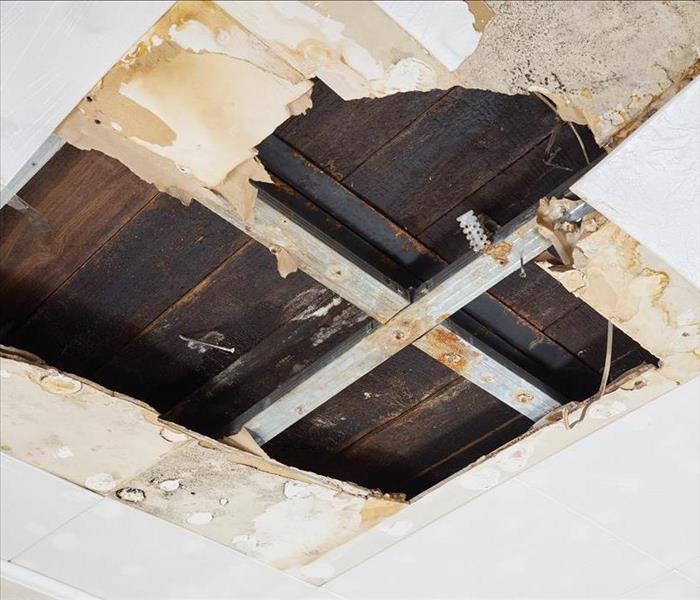 Leakage from the roof can create problems.
Leakage from the roof can create problems.
Common Signs of Water Damage in Your Commercial Building
Water damage is a common issue in commercial buildings. With so many systems and fixtures running through each structure, one broken pipe can lead to disaster. Water repair professionals near you can help you with these problems, but it’s a good idea to be aware of potential risks. Here are a few common ways flooding occurs in commercial areas in Cheltenham, PA, and how you can stop them from disrupting business.
Corroded Toilet Parts
If your commercial building has one or more public bathrooms, you might have to deal with toilet leaks, especially in buildings where these restrooms are used a lot such as clothing stores or restaurants. Toilet parts can wear down quickly and cause leaks, flooding, or clogged pipes. Luckily, toilet parts can be replaced easily.
Leaking Roof
Any roof can lead to water damage problems. Leakage from the roof can create problems for the rest of the structure, whether that be mold or damaged fixtures. A few ways your commercial roof may cause you problems may include these common issues:
- Clogged gutters
- Old roofing system
- Improperly installed skylights
- Damaged roof flashing
With roof maintenance and periodically checking up on gutters and other roofing features, you can stop water damage from occurring as severely.
Broken Pipe
Water pipes run through the walls and floors of your commercial building. When they burst, they can immediately cause damage to an area of the building. Take note if the pipes in the building are getting old. Swollen walls and stained ceilings are pretty good signs that there is a leak or burst somewhere in your building.
Although water damage can’t always be avoided, you can look for key signs that can help you prevent the worst damage. A broken pipe or toilet issue should be taken care of immediately, and the roof should be watched carefully, especially in the winter. With these tips in mind, you can take good care of your commercial building.
Tips for the Mold Remediation Process
7/15/2021 (Permalink)
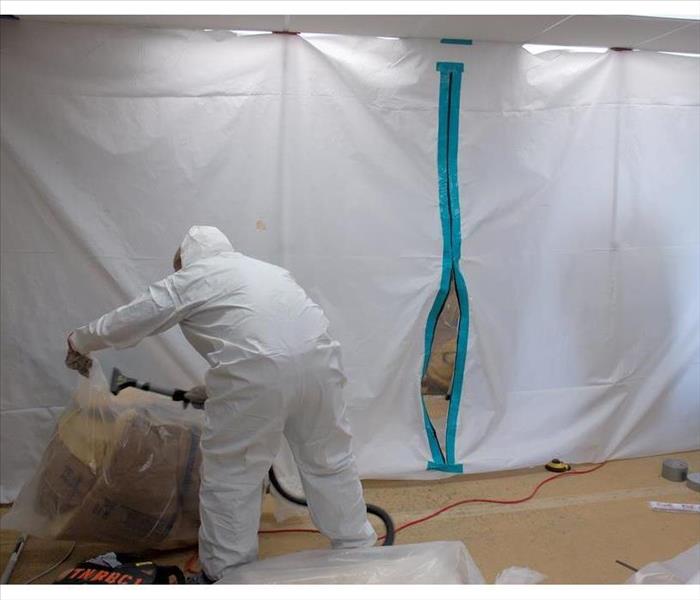 Mold containment in a Wyncote, PA property.
Mold containment in a Wyncote, PA property.
Mold Remediation Process
Mold is everywhere. It is naturally a part of the environment, and this includes the indoor air space of your commercial property in Wyncote, PA, as well as the outdoor area surrounding it. It doesn't become a problem until excess moisture in the building leads to mold growth on surfaces. If you see black mold or notice a musty smell, it may be time to call mold remediation experts to start the process of containing and eliminating the mold.
Containment
The first thing the specialists are going to do is try to contain the problem. After donning the appropriate protective gear, they may start to block off the affected area. If you are anywhere near the area, you need to wear the appropriate gear too:
- Goggles
- Coveralls
- Face mask with respirator
- Gloves
- Protective footwear
To limit the spread of black mold, it is a good idea to block off HVAC intake from affected areas. This can minimize the amount of mold that is spread throughout your vents and thus throughout the building.
Removal
During mold cleanup, it may be necessary to tear out walls where the mold has put down roots. It is often not enough to clean the surface of a wall or other porous structures, because mold does not just grow on the surface. It gets down in all the tiny cracks and pockets once it starts to grow, and it can do so rapidly. Remediation experts may have to remove and replace walls and insulation in order to resolve the issue.
Dehumidification
To avoid a return of the mold growth, it is a good idea to dehumidify the whole building, particularly the area where the mold was growing to begin with. Mold must have a moist environment to thrive. If you deny it moisture, you can prevent future mold problems.
If you need mold remediation, trust the experts. Their knowledge and skill can help you rid your building of black mold growth and keep it from returning. You can help by calling as soon as you suspect there is a problem and by keeping the humidity level low in the building.
Understanding the Difference Between Mitigation and Restoration
6/22/2021 (Permalink)
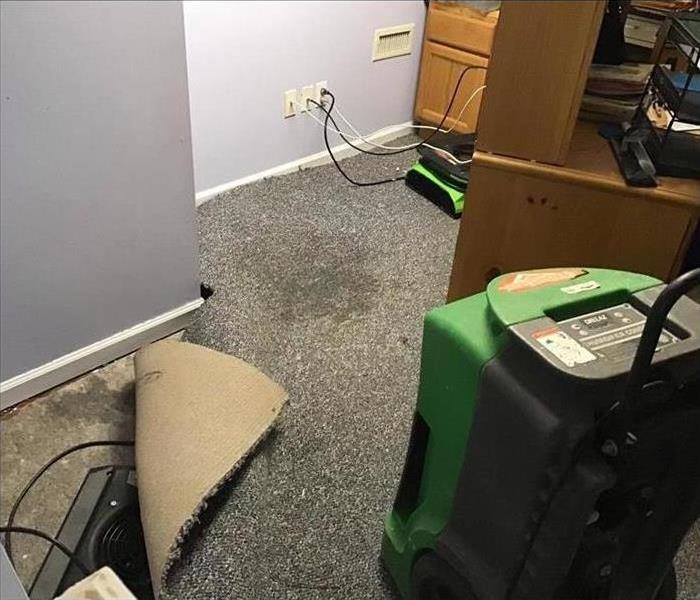 Call SERVPRO after storm damage.
Call SERVPRO after storm damage.
What's The Difference?
If storm damage affects your commercial property in Flourtown, PA, you need to do what you can to get your site back to normal. When you work with a local flood cleanup company, you may hear a lot of confusing terminologies. Some companies may talk to you about mitigation while others talk about restoration.
Mitigation
Mitigation is the initial clean-up right after a storm damages your property. This quick action may include the following:
- Boarding up holes in the roof
- Covering broken windows
- Removing standing water
- Creating a safety perimeter around the property
When you call in a flood cleanup company to tackle mitigation, the professionals will do whatever they can to stop the damage from getting worse. If your roof was left with a hole in it, for example, more rain may be able to enter your building. The mitigation process stops this from happening.
Often, this course of action is required before any restoration efforts can begin. After mitigation is done, you may still be able to see signs of damage and your building may not be ready for everyday activities to resume.
Restoration
Restoration, on the other hand, is a much slower process. A restoration company has to make sure the initial problem has been completely resolved. If a storm flooded your building, for example, the team would make sure all the water is removed and your entire space is properly dried out before starting any of the refurbishment efforts. Once that's done, they start cleaning up soot, removing damaged items and making necessary repairs. After the restoration is complete, your building should be back to its former glory and ready for regular business to resume.
After a storm damages your commercial building in Flourtown, PA, you may need to undertake both mitigation and restoration. A flood cleanup company should be able to help you plan and tackle both types of storm repairs.
3 Steps to Take in Case of a Fire Sprinkler Leak
4/29/2021 (Permalink)
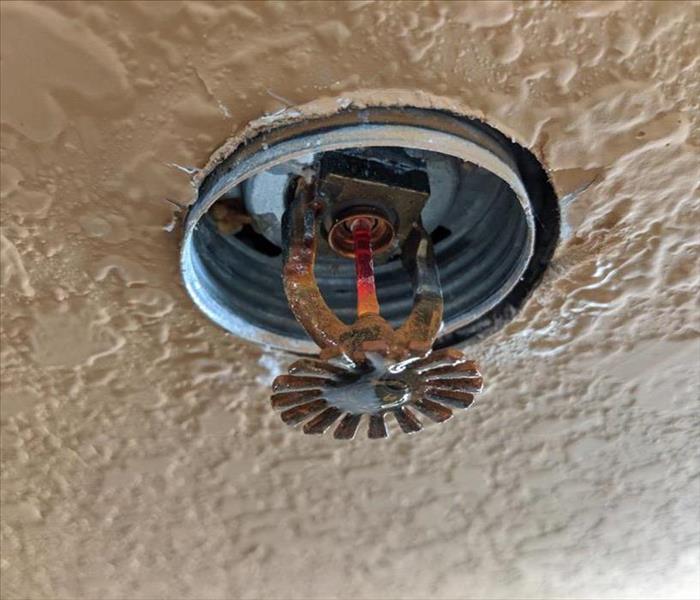 Leaking fire sprinkler.
Leaking fire sprinkler.
Steps To Take In Case Of A Leaking Sprinkler
Property owners in Wyndmoor, PA, know that having a fire sprinkler system installed on their property means added security and peace of mind. Keeping the system maintained is important to ensure its functionality for fire suppression. When you notice a sprinkler leak, you should act immediately to prevent damages.
Sprinklers can leak for many reasons, including:
- Corrosion
- Bad installment
- A damaged sprinkler head
When a sprinkler leaks, it can cause damage to the area where the water drips, especially if it is not repaired fast. Here are some steps to take in case of a leaking sprinkler.
1. Determine the Cause
The first step to take in case of a leak in your system is to determine the cause. In an older system, check the sprinkler head thoroughly to make sure it has not been damaged or corroded. If your sprinkler system is new, the fittings may have been tightened too far and need replacement. You can opt to do this yourself or to call a repair company to help.
2. Contact the Company That Installed Your Fire System
Many companies will provide a warranty for your fire sprinkler system. Contact the installment company to check if the company will cover the leak before searching for other services. If your system is not under warranty, search for the best repair company for you. It is best to collect quotes, compare prices and read reviews before settling for a service.
3. Contact a Fire Damage Restoration Service
If the cause of a leak is that the system has activated due to a fire, a fire damage restoration service will help to clean and restore your property to prevent loss. Contact your local restoration service for fire sprinkler cleanup. Doing this will save you the headache of cleaning after a fire.
Fires are one of the top reasons for property loss. Property owners will benefit from having a well-maintained fire sprinkler system. This will help with fire suppression and protect you from costly damages.
3 Tips for Dealing With Mold
1/26/2021 (Permalink)
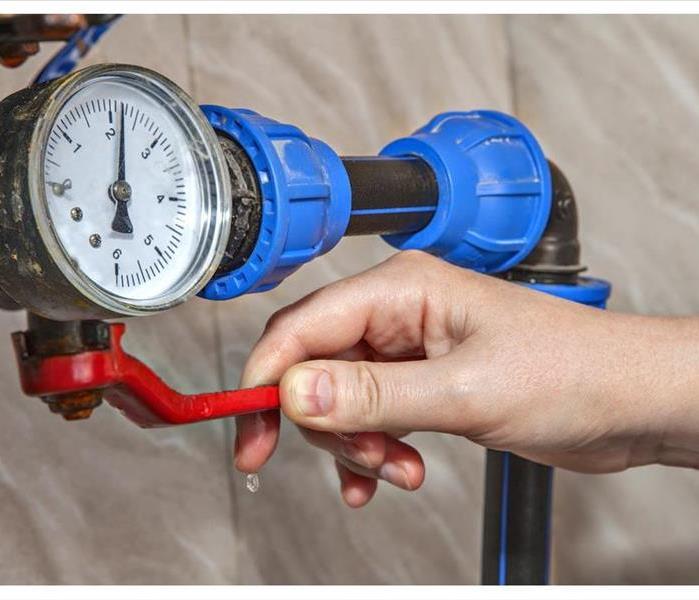 By shutting off your water, you limit any opportunities for mold to expand
By shutting off your water, you limit any opportunities for mold to expand
Tips That Will Help Slow The Spread Mold
Does your building in Whitemarsh, PA, have a moisture problem? If you've noticed any black mold or other microfungi, it's best to call in a mold cleanup professional right away. Until they arrive, there are some tips to follow that will help slow the spread of mold.
1. Turn Off Water
Mold needs a few key environmental conditions to grow — moisture being a big one. By shutting off your water, you limit any opportunities for mold to expand. This is especially important if the original mold growth was caused by a leaky faucet, pipe, or other fixture. Shutting off the flow stops the leak and the mold; it also has a beneficial side effect of stopping any possible further water damage.
2. Shut Off HVAC
One of the other major environmental factors that mold requires to grow and is airflow. Any mold must continuously have a food supply in order to stay alive and continue to multiply. Usually, that food source is sugar and starch in the cellulose in the material of your building. To reach new food sources, airflow is needed. Thus, by shutting off your HVAC system, the spread of mold is limited. Another benefit to shutting off the system is a temperature change. Black mold and many other kinds require a specific temperature range to grow. While mold isn't as picky as your typical houseplant, it still can only tolerate temps as low as 40 degrees Fahrenheit.
3. Clean Nearby Surfaces
While it's advised to leave the dirty work to the experts, you can limit mold growth by cleaning other areas. Any places around where mold has grown should be disinfected with a water and bleach solution. The most common mixture is 1/3 cup of bleach per single gallon of water.
With the right knowledge under your belt and a licensed professional, any mold (even black mold) doesn't stand a chance.
3 Tips for Returning Your Building to Normal After a Fire
1/12/2021 (Permalink)
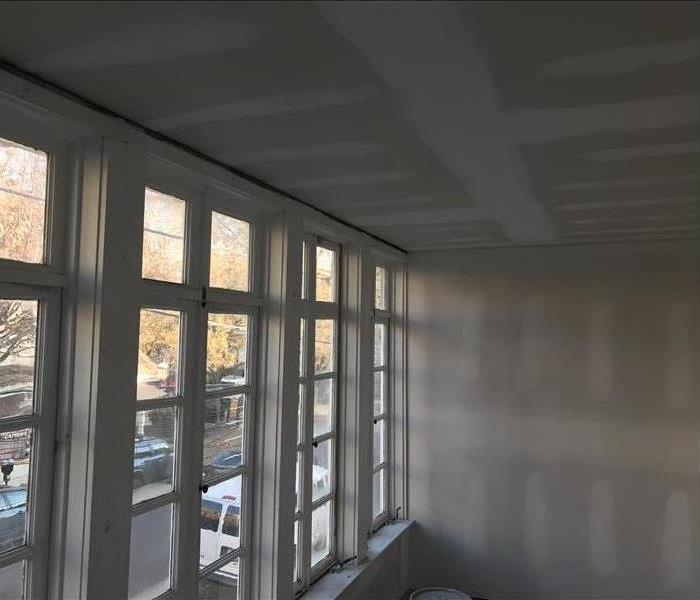 Commercial fire restoration in Whitemarsh, PA
Commercial fire restoration in Whitemarsh, PA
3 Tips for Returning Your Building to Normal After a Fire
If your building in Whitemarsh, PA, has suffered from a fire, it can feel like things will never return to working order. Rest assured that even the most stubborn of smoke damage or sooty walls can be cleaned or replaced with the right knowledge.
1. Be Informed
Many business owners overlook smoke damage. This is understandable, as the sheer visual impact of the direct fire damage itself seems overwhelming. However, before the cleanup process, be informed that soot damage and the like are just as important. These smoke-related damages need to be addressed just as you would serious fire damage.
2. Assess the Damage
Though it can be hard to look past the evident fire damages, try to determine the state of any smoke-damaged items such as walls, furniture, electronics, and more. Remember that smoke permeates everywhere — no item is completely untouched. Due to its chemical composition, smoke acts as an acid-like corrosive. So, as you're inspecting items, look closely. The effects may already be noticeable.
3. Call In a Professional
The best part is that even if some of your building is already damaged by smoke, most items can still be saved. The most important tip is to call in a professional smoke cleanup service as soon as you can. These experts arrive equipped with special tools to restore all types of materials. Furniture is saved with powerful smoke detection and removal, and soot is cleaned off walls with precision and care. Smoke cleaning is a delicate task that is best left to these specialists. Rest assured that your building is on its way to being restored to working order with efficiency and diligence.
Fire and smoke damage can feel like a lot to take in, but, with the right knowledge and a professional at your side, you can feel confident knowing that your building is in good hands.
What is Category 2 Water Damage?
12/14/2020 (Permalink)
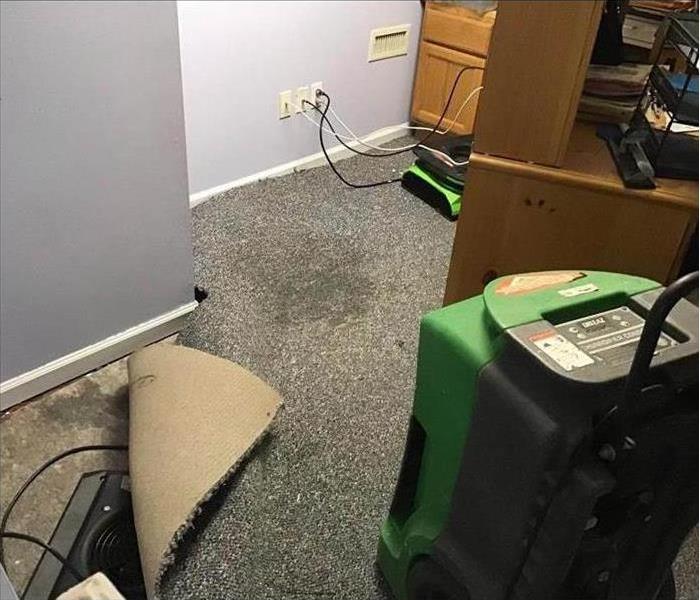 Water cleanup in an office space
Water cleanup in an office space
How To Identify Category 2 Water Damage And What To Do
Some water damages are more hazardous than others, and require professional assistance every step of the way, from water pipe repair to carpet replacement. If your business in Whitemarsh, PA, suffers water damage, it is important to know what you are facing. Here are a few tips to know how to identify category 2 water damage and what to do.
Category 2 Water Damage Sources
Category 2 water damage is damage caused by water that contains chemical, biological, or physical contaminants that cause discomfort, irritation, or illness to those exposed to it. This type of water damage includes intrusions of water from the following sources:
- Flooded toilets with urine
- Sump pump failures
- Discharge from dishwashers or washing machines
- Clean water that sits too long
- Water that starts at a higher level and seeps down through building materials
Because the water that causes category 2 water damage can cause irritation and illness, it is essential that restoration specialists are contacted for cleanup.
What You Can Do
When you discover a leak or flood from a broken pipe or malfunctioning appliance, turn off the water source if it is safe to do so. If you are unable to reach the water source, contact a plumber or professional. Professionals can advise you if water pipe repair or replacement is necessary. Do not attempt it on your own. Remove all furniture, carpets, and other items not yet affected by the water intrusion and place them in a safe and dry area. Your work stops there. Contact professionals for cleanup. The water that causes category 2 water damage should only be dealt with by professionals.
What Professionals Will Do
Plumbers will handle water pipe repair and replacement. They will also address and fix any sewer issues and restore your water lines to safe and working order. Restoration specialists will use specialized equipment to dry and sanitize your carpets, walls, and other structural materials. They will repair and replace any structural materials as needed and ensure that every part of your business is cleaned, sanitized, and safe to get back to business.
Cleaning Category 2 Water Damage
11/4/2020 (Permalink)
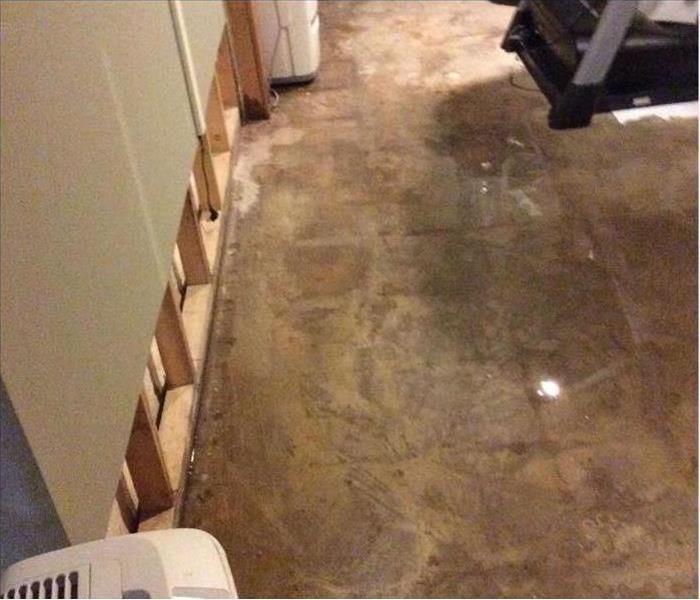 Clearwater damage in Plymouth Meeting, PA
Clearwater damage in Plymouth Meeting, PA
When your commercial property is flooded, emergency restoration professionals can assist with the water pipe repair. First, they must first categorize the type of water loss present.
Water Loss Categories
Category 1 losses involve clean water and are thus the least severe. Category 3 losses involve major contamination.
Category 2 losses, meanwhile, fall somewhere in the middle. They involve water that contains biological, physical or chemical contaminants. This grey water also frequently features microorganisms and the nutrients that help them grow. Typical causes of Category 2 water losses include:
- Hydrostatic failure
- Sump pump malfunction
- Washing machine or dishwasher discharge
- Toilet bowl leaks (without feces)
Clean water that sits in a building for an extended period of time can also become contaminated and cause Category 2 water losses. That is why you should call water pipe repair specialists in Plymouth Meeting, PA, as soon as you discover a flood.
Water Loss Remediation
Once the experts arrive at the scene, they will find the broken pipe and stop it from causing further damage. They will then remove small items from the scene and block off any furniture in the affected area.
Next, the pros will utilize special tools to extract water from carpets. They might additionally rely on drying chambers and dehumidifiers to assist with the cleanup.
Experts will also use biocides to limit the growth of microbials. Still, you may have to discard and replace some of your contaminated assets.
Make sure that you or the restoration experts keep detailed records of the damaged items and the work performed on the premises. This will expedite the insurance claims process.
A water pipe repair may involve potentially harmful Category 2 damage. Category 2 losses can occur if the water comes from an unclean source or has remained inside the property for an extended period of time. Because these water losses are dangerous, they should only be handled by trained professionals.
How to Prepare for an Emergency Evacuation of Your Business
8/19/2020 (Permalink)
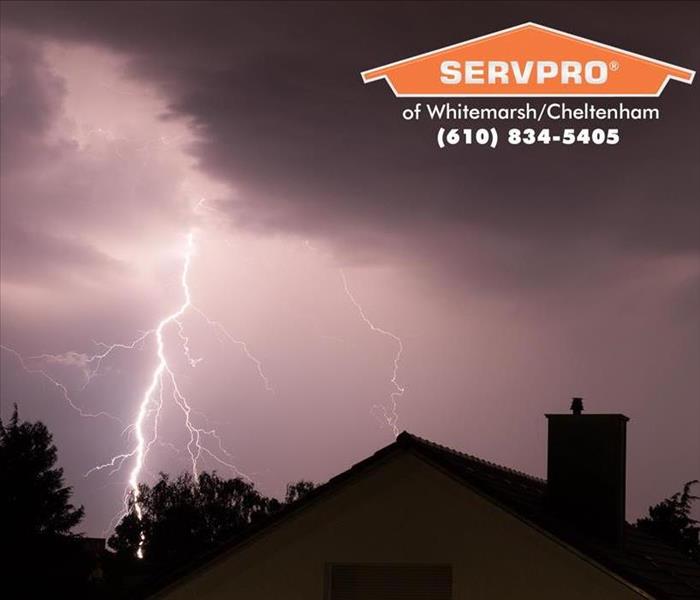 Creating an action plan is the best place to start preparing for trouble.
Creating an action plan is the best place to start preparing for trouble.
One of the most neglected areas of business planning is the emergency evacuation plan. No one ever expects a crisis, and when it comes, it’s too late to prepare. But having something as simple as a fire drill is a proven way to save lives, reduce property damage, and possibly avoid lawsuits.
Workplace Emergencies Are Surprisingly Common
The list of potential emergencies is huge. Those that are likely to require evacuation aren’t as numerous, but still considerable. The most likely include
Floods
Severe storms
Fires
Hazardous material spills
Natural gas leaks or explosions
Civil disorder
If you’re thinking that no one can prepare for everything, you’re right. However, studies indicate that simply having a solid fire drill plan in place and tested for effectiveness is enough to dramatically change the odds.
Your Emergency READY Profile
Creating an action plan is the best place to start preparing for trouble. The simplest way may be to start with the SERVPRO Emergency READY Profile. Not only will this help organize your thoughts for your evacuation plan, but it’s also an excellent way to reduce damage to your business.
You can download the free smartphone app to help you set up a profile. This will aid in locating items that should be shut off in a crisis if it’s safe to do so, such as natural gas. It also includes all the resources you need at your fingertips to return to normal operations, as well as contact and insurance information.
Your Evacuation Plan
When you create your escape plan, consider the type of emergency, where it’s likely to occur, and how anyone in your business can get out. Start with fires since they are so common and so dangerous.
Where is a fire most likely to happen? Where are the fire extinguishers? Which exits are designated? Ask lots of questions, then design and execute a fire drill. Once that’s done, simple modifications can allow you to expand it to any sort of evacuation.
When everyone’s safe, you’ll need a top restoration company in Whitemarsh, PA, to inspect and repair the damage. They can help with insurance claims and get your business reopened quickly!
3 Ways Cities Are Fighting Flooding
6/17/2020 (Permalink)
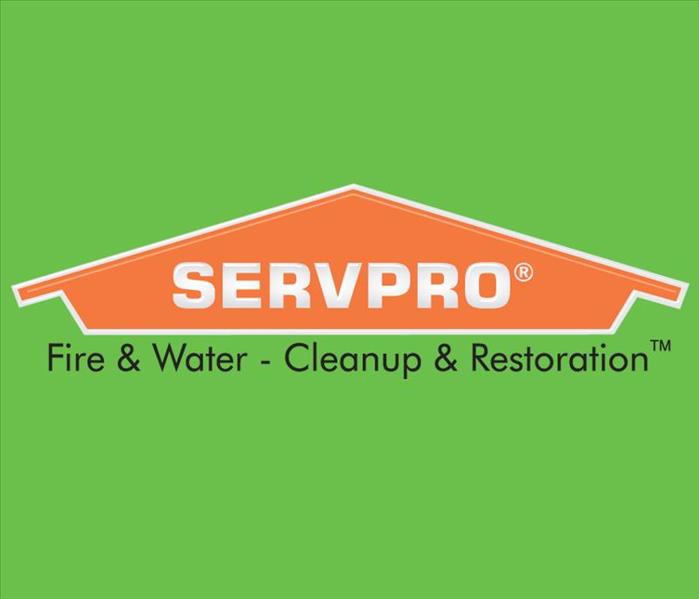 Staying aware and ready is necessary to reduce flood damage.
Staying aware and ready is necessary to reduce flood damage.
The toll of flooding in Whitemarsh, PA, can be devastating and extremely costly. When high water begins to permeate structures, streets, and homes, communities rely on disaster recovery teams to face unexpected dangers and extensive damage. While many cities have retaining walls, levees, reservoirs, or retention ponds to hold water, other methods to stop flooding are being explored to minimize damage. Below are three ways cities are tackling flood issues.
1. New Products
Instead of relying on sandbags, many are turning to new innovations to prevent high water from creating damage, as well as reduce contamination. Watergates are lightweight, easy to deploy, and self-stabilize from water pressure. Inflatable barrier systems make it easier to keep the water at bay and are typically longer and lighter than traditional systems. Modular devices are also now available that can be stacked to the height needed to prevent water seepage.
2. Vegetation
Nature itself offers many ways to minimize flood damage. Many cities are beginning to see the benefits of green roofs, which absorb rainwater and assist with storm management. Instead of additional runoff from buildings, which eventually hits concrete and causes overflowing, these types of roofs can use the water to grow vegetation. Planting gardens, trees, shrubs, and other plants also provide additional ways to absorb excess water. Areas prone to flooding are also re-engineering or creating floodplains to better accommodate the absorption of water, which is lacking in cities covered in concrete.
3. Enhanced Sewage Systems
The main issue with flooding is sewage water. Upgrades to these systems allow for better separation of rainwater and sewer water, reducing the potential for wastewater to surge. Newer piping within the systems enhances their ability to function properly and reduce corrosion and buildup from adding to the effects of high water.
While flood prevention comes in many forms, high water and flooding are still not something property owners can dismiss. Staying aware and ready is necessary to reduce flood damage.
How To Tell if Your Air Ducts Have Mold
4/27/2020 (Permalink)
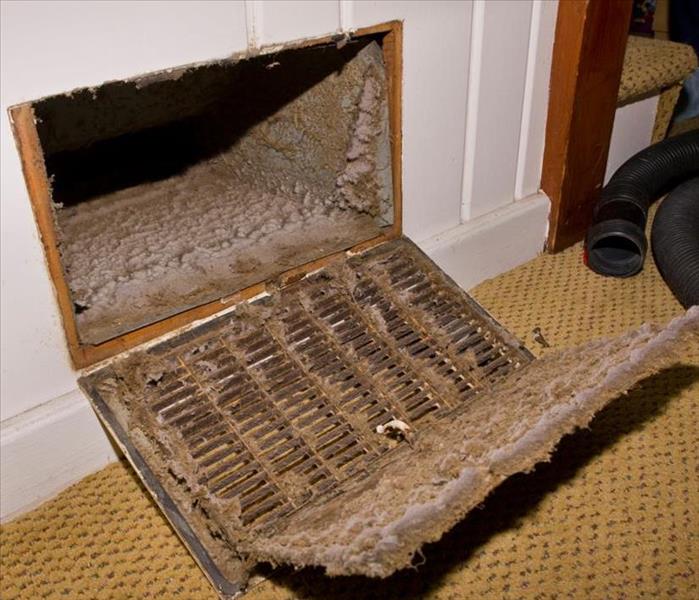 When it comes to HVAC cleaning, make sure to get the job done right.
When it comes to HVAC cleaning, make sure to get the job done right.
You may not realize it, but the heating and cooling (HVAC) system in your building provides the perfect conditions for mold to grow. The moisture that collects in your air conditioning drip pans and evaporator coils, as well as in the air ducts, creates just the right environment. As cool or heated air is blown into the building through the vents, it will bring mold and mildew along with it. A mold remediation specialist should inspect the system periodically and conduct a thorough HVAC cleaning.
Between inspections by a professional, there are some telltale signs to watch for that would indicate mold growth.
Look for Mold in Your Heating and Cooling System
Routine inspections are the best way to keep your building in Cheltenham, PA, from becoming overrun by mold. Look for any signs of mold in the following areas:
Ductwork - Run a flashlight into the ducts to look for mold and moisture. Mold is usually spotty and black or gray.
Registers - Inspect the registers for any visible signs of mold.
Drip pans for the furnace and air conditioner - Make sure that the pans are draining. If they become plugged, moisture can accumulate, which is an invitation for mold.
Evaporator coils - Mold can grow around the coils, so inspect them carefully.
If any Mold is spotted, call a professional as soon as possible to inspect the system and perform an HVAC cleaning.
Let Your Nose Be Your Guide
Since mold spores are very light, they can easily become airborne. Mold tends to have a very distinct and unpleasant smell, so you may smell it even before you see it. Be alert to any unusual odors near the building’s registers.
You might think that you can do a good job cleaning vents and air ducts, but only a professional can tackle the problem safely and properly. When it comes to HVAC cleaning, make sure to get the job done right.
Do I Need Business Interruption Insurance?
4/19/2020 (Permalink)
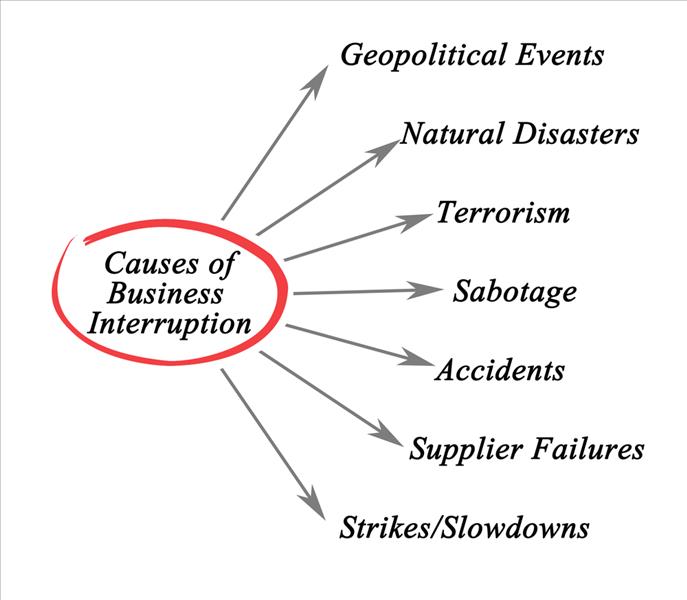 It may be good to purchase business interruption insurance
It may be good to purchase business interruption insurance
Your commercial insurance policy will pay for damages to your physical property in Wyncote, PA while you are recovering from a disaster, such as a business fire. If you have to stop business operations temporarily or relocate while renovations take place, however, your basic policy won’t cover any of the business interruption costs. You should talk with your insurance agent about the need for an additional business income insurance policy.
What Does Business Income Insurance Cover?
This interruption policy can be added to your basic coverage to help you recoup the revenue lost during the business downtime. It’s specifically designed to help a business maintain the same financial position it had before the fire. The following are items typically covered under this additional policy:
Profits - Your agent will look at your financial statements from several previous months to determine how much profit could have been earned during the downtime.
Fixed costs - This includes operating expenses, such as payroll, building rent or mortgage payments, utilities and other costs to run operations.
Extra expenses - Any additional costs will be covered, within reason, if needed for the business operations to continue while the fire cleaning takes place.
Temporary relocation costs - Moving expenses, including rent for a temporary location, can be covered under specific policies.
There is an additional policy that can be purchased to cover your business, called contingent business interruption insurance. If one of your key suppliers has suffered building damage due to an event, such as a natural disaster, and can no longer supply to you, your lost revenues can be recouped.
It’s best to talk with your insurance agent about all of the options available so that you make the right choice for your business. While it may seem unnecessary to purchase business interruption insurance for your property, not having it when you need it most can be devastating to your business.
How To Prevent Damage in Your Office From Flooding
3/30/2020 (Permalink)
 By following these steps, you can keep flood damage to a minimum. Start today so you can be prepared tomorrow.
By following these steps, you can keep flood damage to a minimum. Start today so you can be prepared tomorrow.
It can be every property owner's worst nightmare: Coming into your building and seeing water everywhere. Flood damage can cause serious problems for building materials, electronics, documents, and personal belongings. You can take comfort to know that highly qualified flood remediation crews can restore your office. Still, it's even better if you can learn how to minimize the damage in the first place.
Inspect Key Areas of the Building
In some instances, you won't have any control over how and when flooding occurs in your building. A sewage backup, main water line break or massive storm such as a hurricane could come without warning. However, you can reduce your risk of suffering heavy damage by doing the following:
Regularly maintain the plumbing system in your building.
Check the roof annually for weak spots or other defects.
Inspect the rain gutters and downspouts to make sure they divert water away from the property.
Move Items To Higher Ground
You can minimize flood damage by acting quickly and getting materials off the floor. As soon as you notice water coming into your building, get computers, printers, books, files, and furniture off the ground. Flooding will usually start on lower levels, so it's good to move these items as high as possible.
Put Barriers in Place
You can be ready for storm damage in Wyncote, PA, by looking at your landscaping. Planting trees around the perimeter of your grounds can keep the water back if nearby waterways overflow or if sewers overflow. You should also have sandbags handy and place then around vulnerable areas of the building.
Seal Windows and Doors
Go through your building and reseal windowsills and doorframes. You can also apply a waterproof veneer to outside walls. These measures will protect you against shallow flooding.
By following these steps, you can keep flood damage to a minimum. Start today so you can be prepared tomorrow.
Is Your Sewer System About To Break?
3/9/2020 (Permalink)
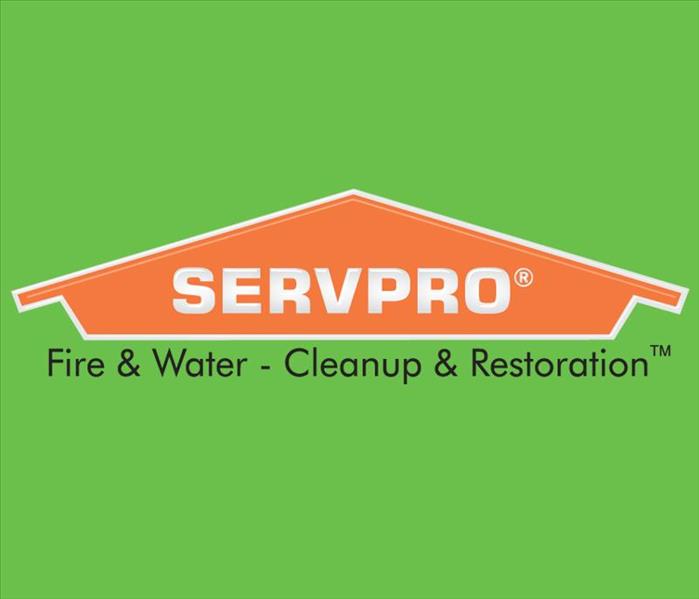 Don't let a blocked sewer shut down your place.
Don't let a blocked sewer shut down your place.
As a business owner in Whitemarsh, PA, keeping the doors open and workers employed is a top priority. You don't want to close up shop because a blocked sewer pipe has burst, establishing a working hazard. Is it possible to know it's about to happen? By keeping a sharp eye out, proprietors might save themselves a great deal of headache, money and time by locating issues sooner rather than later, avoiding a major catastrophe.
1. Watch Your Inside Plumbing
Have you noticed drains clogging more than usual? A commode that doesn't flush easily or works slowly is a sign of a possible toilet overflow. Contact a plumber to complete an evaluation of the pipes. Sometimes it's not always that noticeable. Is there an unusual smell coming from the sink, or do you hear strange noises when fixtures are used? Something could be happening. Therefore, if you notice bulging walls or ceiling tiles, the pipe may have an complication. Have someone out to locate a possible leak within the walls. If not caught promptly, category 3 water could contaminate the premises, requiring the assistance of a water remediation company.
2. Evaluate the Structure
Don't neglect the surrounding yard. Small changes, developing over time, could mean a blocked sewer. For example, have you noticed cracks or changes in the ground? Are problems showing in the stucco or walls? If tree roots or wear and tear affect the foundation, they could also impact pipes. That overgrown system can puncture a pipe line, and the shifting dirt may impact the lines.
3. Inspect Landscaping
Dips, holes or puddles could be an early sign of a leak, increasing the potential of pipe breaks. So, if you notice something changing with your bushes or trees, call out someone to snake the pipes, searching for corrosion or degradation in the copper.
Don't let a blocked sewer shut down your place. Stay aware, inspecting rooms and the outdoors. Minor shifts should be noted and watched. Should they persist or you feel concerned, seek help from professional services.
Maintain Your Commercial Roof To Prevent Storm Damage
3/6/2020 (Permalink)
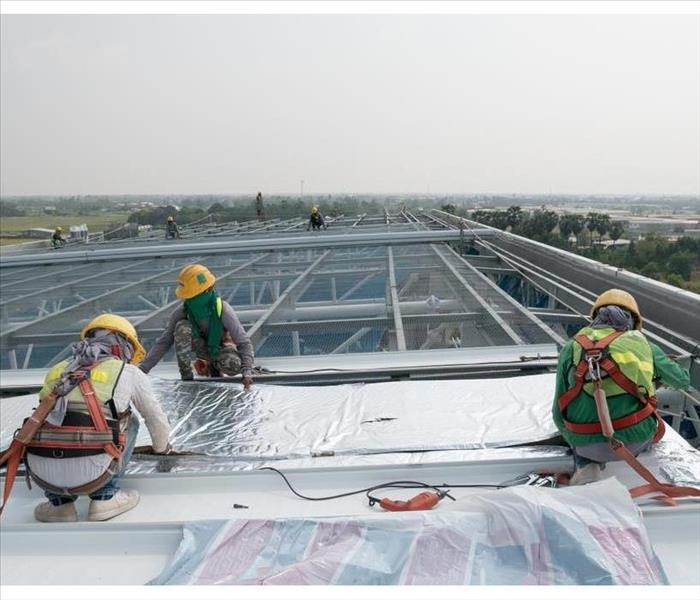 Commercial roof maintenance in Cheltenham, PA
Commercial roof maintenance in Cheltenham, PA
Take These Roof Maintenance Strategies To Prevent Larger Problems
No matter the strength of your commercial roof, harsh elements like wind and water can eventually wear it down and create roof damage. This leaves your business and the people inside vulnerable to the conditions. Even though insurance plans and water damage remediation can help you manage this loss, proactive roof maintenance is the most cost-effective solution. Consider taking these roof maintenance strategies to prevent larger problems.
1. Organize an Inspection
Since roofs withstand all sorts of debris, water contact and wind damage, it is important to organize a detailed inspection at least twice a year. The sooner you can find problems, the faster you can fix them before the damage increases and places your clients and personnel in danger. The roof can be inspected by anyone who knows about the system, such as yourself, maintenance crew or an engineer. Practice the appropriate safety measures during the inspection.
2. Take Note of the Flaws
You and/or the employee handling the sweep needs to find all roof damage. The most common flaws involve cracks and breaks in the material, as well as components that are peeling off. Also, look for debris, especially if it blocks drainage or it is too close to the roof, such as tree branches. You are not able to conduct most of these fixes yourself, so keep a note on the flaws and describe them in detail. A specialist will need the information for roof rebuild or repair procedures.
3. Clear Immediate Hazards
While you cannot resolve all problems without a professional, you can mitigate damage by clearing the debris in the roof. Start by removing trash from the drainpipes, since blockage leads to water build-up, extra moisture, and structural damage. Also, cut any trees with branches near the roof. During a storm, they can fall and damage the location.
Proper and consistent maintenance is the most effective method of combating roof damage in Cheltenham, PA, businesses. Learn about these upkeep tactics to protect your establishment.
How To Remove Mold From Air Conditioner Ducts
1/14/2020 (Permalink)
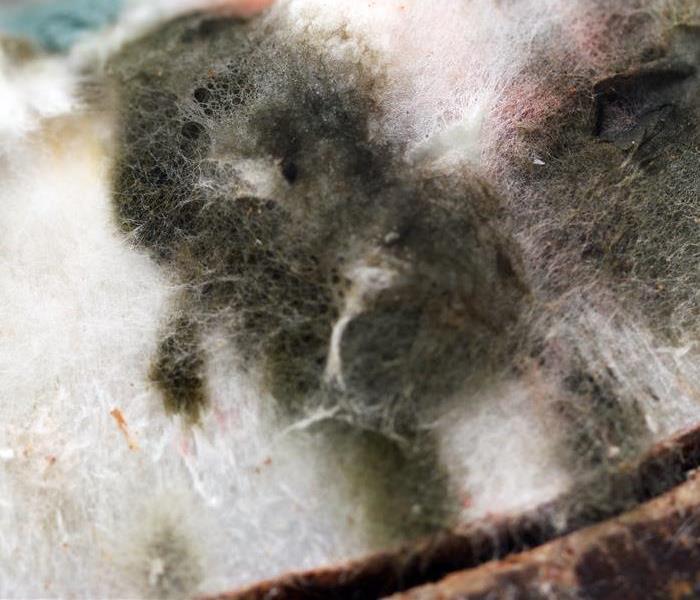 Black mold can be easily identified by a professional.
Black mold can be easily identified by a professional.
As a business owner, it can be shocking to find out that you have black mold circulating throughout your building. However, when addressed appropriately, the situation can often be remedied rather quickly. If you suspect mold in Whitemarsh, PA, there are several steps you can take to ensure the mold is removed from your premises as quickly as possible.
1. Determine if There Is a Problem
If it feels more like springtime allergies inside your office than out in the fresh air, you may have a mold problem. A musky odor is also a sign that mold is lurking somewhere in your building. If you suspect mold, you will need to hire a certified mold expert to assess the situation and give you a definitive answer.
2. Examine the Extent of the Damage
If mold is found inside your air ducts, you will need to check to see if it has spread further. A common place for mold to attack next is the insulation around the ventilation system. You, or the mold inspector, can check this area by gently pulling back on the insulation. If mold is discovered, the material will likely need to be discarded and replaced.
3. Clean the Mold
Since black mold is an organic substance, it will take special products to kill it. The ducts will need to be thoroughly cleaned and some materials may need to be replaced.
4. Remove the Source
If it has not already been identified, the source of the mold will need to be determined. Start by looking for places that gather moisture, such as in bathrooms and around water coolers. Roofs are another common problem area.
Black mold can be easily identified by a professional. If it is found, your best course of action is to hire an expert mold remediation company to safely clean ducts and identify the cause of the problem.
Mold Prevention Measures Must Include the Routine Inspection of these 5 Areas
1/9/2020 (Permalink)
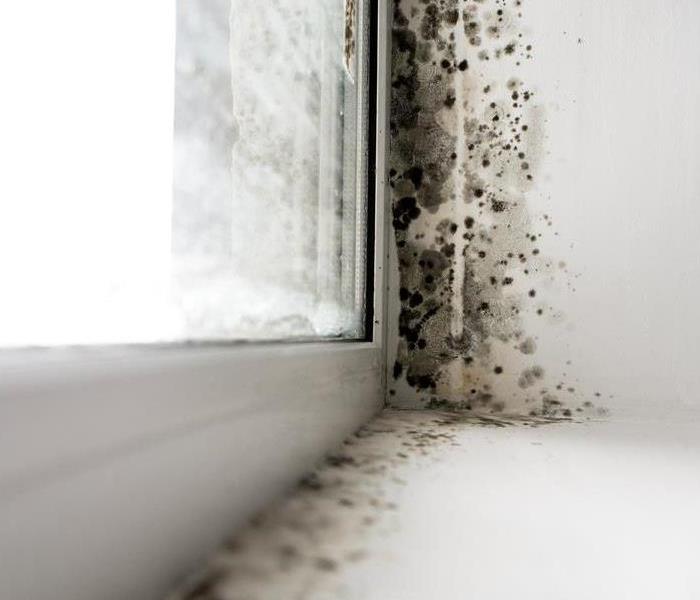 Mold prevention must include routine property inspections, especially of the areas mentioned above.
Mold prevention must include routine property inspections, especially of the areas mentioned above.
Mold prevention is more inclusive than annual facility inspections. If you only walk through your property once per year, then you risk not seeing a potential issue, like water damage, until it is too late and requires a mold removal business in Whitemarsh, PA. Therefore, to limit your risks, it is essential to perform routine inspections of the following five areas.
Property foundation
Roof
Windows and doors
Plumbing
Appliances
Property Foundation
Many business owners do not consider a leaky foundation as a precursor to mold. However, if water is allowed to enter a facility unabated, then mold growth is always a possible consequence. Therefore, make sure landscaping is graded away from the property and that downspouts and gutters are maintained.
Roof
Do you have an attic or drop ceiling that hides the roof from interior inspection? It is necessary to look for signs of wear and water damage to the roof from both the interior and exterior of your building, especially when the goal is to prevent mold.
Windows and Doors
Another item to pay attention to for mold prevention is the seals around your building's windows and doors. Seals age over time and can crack or become worn and ineffective, meaning every time it rains, your property is a little more vulnerable to mold growth.
Plumbing
If you operate out of a warehouse, then you are lucky because much of your plumbing is visible. However, if your property is more traditional, then leaks and other plumbing issues may not be as obvious, potentially leading to a hidden mold threat.
Appliances
Condensate pipes or appliances tucked into tight nooks are often overlooked during routine visual inspections because they are hidden. Therefore, be sure that visual inspections include thorough checks of equipment and machinery. For example, pull out breakroom fridges and check underneath sinks.
Mold prevention must include routine property inspections, especially of the areas mentioned above. While annual checks are an excellent first step, a lot can happen in a year, so to protect your property, increase walk-throughs and visual inspections.
3 Ways to Determine if Mold is Growing in Your Commercial Building
1/8/2020 (Permalink)
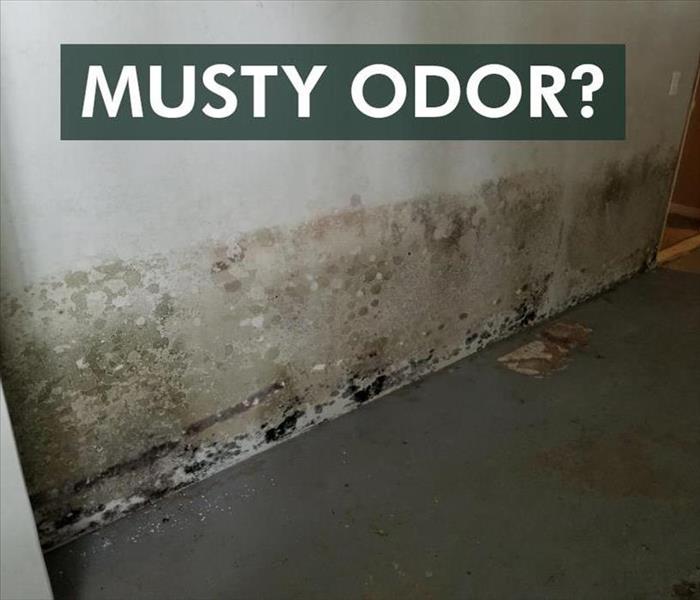 Are you noticing a musty odor in your business?
Are you noticing a musty odor in your business?
Ways To Determine If Mold Is Present In Your Building
Whether it is caused by water damage or high humidity, an excessive amount of moisture can cause mold to grow in your Plymouth Meeting, PA, building. This is a common problem, so if it does occur, there is no need to panic. An indoor environmental specialist can help you remove the fungus and have your business back to normal in no time. Mold isn’t always noticeable right away, but there are a few ways to determine if it is present in your building.
1. Visible Growth
Of course, visible mold growth is the easiest sign to spot. If a large colony has begun to spread, you will often be able to see it. It may show up as discoloration on the walls or ceilings. While black mold may be the first to come to mind, it comes in other colors as well, such as green, orange or white. Some physical signs to look out for include:
- Thread-like appearance
- Slimy or fuzzy texture
- Small spots or clusters of discoloration
2. Musty Odor
While visible mold may be the easiest way to determine growth, it is not always the first sign. In some cases, the fungus might be growing inside the walls or underneath carpeting. When this happens, you might smell the mold before you see it. If you notice a musty or earthy odor, a mold test may be needed.
3. Building Inspection
If you believe there may be mold in your building, the best way to find out is to have an inspection done by an indoor environmental specialist. He or she will have the necessary training and equipment to locate any excessive growth and then determine the best way to move forward.
If the indoor environmental specialist has determined that mold is present, you will need to have the building cleaned and restored. A mold remediation company can do this for you. These professionals will be able to thoroughly remove the growth safely and sanitize the area to help keep it from returning. They will also be able to make any necessary repairs to the building and affected items.
How Commercial Property Managers Should Prepare for Storms
12/23/2019 (Permalink)
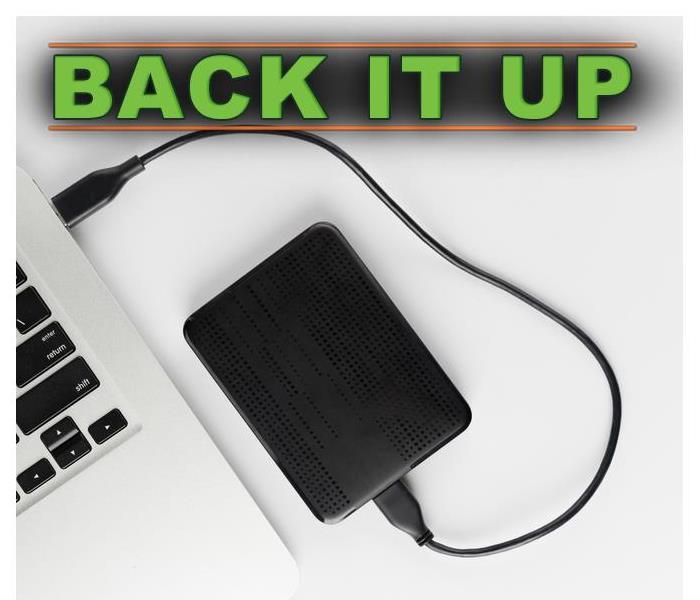 Back up any property files in the cloud
Back up any property files in the cloud
Proper property management is especially important during an emergency. If you are a commercial property manager, you should take the below steps as part of a storm preparedness plan.
Keep an Emergency Contact List
Property managers need to make sure everyone in the building is accounted for following a disaster. You should thus keep an emergency contact list that includes:
- The names of the workers in each office
- The email addresses of these workers
- The cell and office phone numbers of the workers
- The names of employees with special needs who might need assistance during an evacuation
You may also want to document the schedules of each worker. That way, you will know who is and is not in the office building at certain times. Be sure to back up the list so it can be accessed remotely if necessary.
Your storm preparedness plan should also include the phone numbers for local police, ambulance and fire services. Put these numbers next to any public address systems, two-way radios and phones in your building.
You should additionally list contact information for your local commercial building restoration services company. This business can help with flood or storm cleanup.
Educate the Staff
Make sure that all of your staff members understand what to do during a storm. In general, engineers, front desk workers and managers should remain on the property as long as possible to keep the building running and assist with evacuation.
Back Up Important Documents
While flood cleanup experts can fix physical storm damage to your property, restoring intellectual property is more difficult. That is why you should back up any property files in the cloud. You can also keep them in a hard drive that is stored in a waterproof and fireproof location.
A disaster can strike your commercial building at any time. However, by making a storm preparedness plan, you can mitigate the flood damage to the property.
Ultrasonic Cleaning!
1/8/2019 (Permalink)
How does the cleaning work?
It's all about bubbles!! According to Morantz, "These bubbles are created by sound waves as those waves move more water. This is known as Cavitation." Cavitation is the formation of bubbles in water.
With the Cavitation process, the bubbles collapse which happens a million times per second (AKA A LOT). This heat & pressure is what gives the machines such cleaning power.
What can you clean?
The beauty of Ultrasonic Cleaning is how much we can actually clean! Examples of what we can clean lists as follows:
- Content Restoration (stuffed animals, toys, knickknacks, mold remediation)
- Medical Cleaning & Infection Control (trays, bed frames, key boards, surgical equipment)
- Electronics (computers, tvs, telephones)
- Parts (automotive parts)
- Janitorial & Maintenance (chandeliers, oriental rugs)
We want to make sure your belongings are properly taken care of, so we want to make your time of stress as painless as possible. It's as easy as letting your Lead Crew Chief know you want items cleaned!
If you want anything cleaned, call us at (610)-834-5405!
Content By:http://ultrasonicmachines.com/about-ultrasonics/how-does-ultrasonic-cleaning-work/





 24/7 Emergency Service
24/7 Emergency Service



















